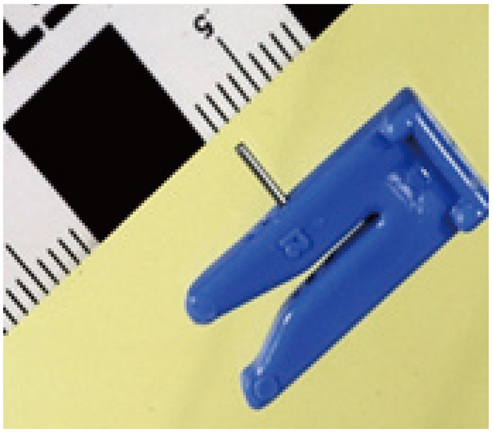Korean J Radiol.
2012 Feb;13(Suppl 1):S56-S61. 10.3348/kjr.2012.13.S1.S56.
Evidence-Based Decompression in Malignant Biliary Obstruction
- Affiliations
-
- 1Department of Medical Imaging, University of Toronto, Toronto General Hospital, 585 University Ave, Toronto, ON, M5G 2N2 Canada. Chia.ho@uhn.on.ca
- 2Faculty of Medicine, University of Toronto, 1 King's College Circle, Toronto, ON, M5S 1A8 Canada.
- KMID: 1372868
- DOI: http://doi.org/10.3348/kjr.2012.13.S1.S56
Abstract
- As recent advances in chemotherapy and surgical treatment have improved outcomes in patients with biliary cancers, the search for an optimal strategy for relief of their obstructive jaundice has become even more important. Without satisfactory relief of biliary obstruction, many patients would be ineligible for treatment. We review all prospective randomized trials and recent retrospective non-randomized studies for evidence that would support such a strategy. For distal malignant biliary obstruction, an optimal strategy would be insertion of metallic stents either endoscopically or percutaneously. Evidence shows that a metallic stent inserted percutaneously has better outcomes than plastic stents inserted endoscopically. For malignant hilar obstruction, percutaneous biliary drainage with or without metallic stents is preferred.
Keyword
MeSH Terms
Figure
Cited by 2 articles
-
Double-Stent System with Long Duodenal Extension for Palliative Treatment of Malignant Extrahepatic Biliary Obstructions: A Prospective Study
Dong Il Gwon, Gi-Young Ko, Jong Woo Kim, Heung Kyu Ko, Hyun-Ki Yoon, Kyu-Bo Sung
Korean J Radiol. 2018;19(2):230-236. doi: 10.3348/kjr.2018.19.2.230.Outcomes of endoscopic retrograde cholangiopancreatography-guided gallbladder drainage compared to percutaneous cholecystostomy in acute cholecystitis
Hassam Ali, Sheena Shamoon, Nicole Leigh Bolick, Swethaa Manickam, Usama Sattar, Shiva Poola, Prashant Mudireddy
Ann Hepatobiliary Pancreat Surg. 2023;27(1):56-62. doi: 10.14701/ahbps.22-065.
Reference
-
1. Andersen JR, Sørensen SM, Kruse A, Rokkjaer M, Matzen P. Randomised trial of endoscopic endoprosthesis versus operative bypass in malignant obstructive jaundice. Gut. 1989. 30:1132–1135.2. Shepherd HA, Royle G, Ross AP, Diba A, Arthur M, Colin-Jones D. Endoscopic biliary endoprosthesis in the palliation of malignant obstruction of the distal common bile duct: a randomized trial. Br J Surg. 1988. 75:1166–1168.3. Smith AC, Dowsett JF, Russell RC, Hatfield AR, Cotton PB. Randomised trial of endoscopic stenting versus surgical bypass in malignant low bileduct obstruction. Lancet. 1994. 344:1655–1660.4. Dinant S, Gerhards MF, Rauws EA, Busch OR, Gouma DJ, van Gulik TM. Improved outcome of resection of hilar cholangiocarcinoma (Klatskin tumor). Ann Surg Oncol. 2006. 13:872–880.5. Nakeeb A, Tran KQ, Black MJ, Erickson BA, Ritch PS, Quebbeman EJ, et al. Improved survival in resected biliary malignancies. Surgery. 2002. 132:555–563. discussion 563-564.6. Seyama Y, Makuuchi M. Current surgical treatment for bile duct cancer. World J Gastroenterol. 2007. 13:1505–1515.7. Valle J, Wasan H, Palmer DH, Cunningham D, Anthoney A, Maraveyas A, et al. Cisplatin plus gemcitabine versus gemcitabine for biliary tract cancer. N Engl J Med. 2010. 362:1273–1281.8. Speer AG, Cotton PB, Russell RC, Mason RR, Hatfield AR, Leung JW, et al. Randomised trial of endoscopic versus percutaneous stent insertion in malignant obstructive jaundice. Lancet. 1987. 2:57–62.9. Piñol V, Castells A, Bordas JM, Real MI, Llach J, Montañà X, et al. Percutaneous self-expanding metal stents versus endoscopic polyethylene endoprostheses for treating malignant biliary obstruction: randomized clinical trial. Radiology. 2002. 225:27–34.10. Saluja SS, Gulati M, Garg PK, Pal H, Pal S, Sahni P, et al. Endoscopic or percutaneous biliary drainage for gallbladder cancer: a randomized trial and quality of life assessment. Clin Gastroenterol Hepatol. 2008. 6:944–950.e3.11. Lee SH, Park JK, Yoon WJ, Lee JK, Ryu JK, Yoon YB, et al. Optimal biliary drainage for inoperable Klatskin's tumor based on Bismuth type. World J Gastroenterol. 2007. 13:3948–3955.12. Paik WH, Park YS, Hwang JH, Lee SH, Yoon CJ, Kang SG, et al. Palliative treatment with self-expandable metallic stents in patients with advanced type III or IV hilar cholangiocarcinoma: a percutaneous versus endoscopic approach. Gastrointest Endosc. 2009. 69:55–62.13. Kloek JJ, van der Gaag NA, Aziz Y, Rauws EA, van Delden OM, Lameris JS, et al. Endoscopic and percutaneous preoperative biliary drainage in patients with suspected hilar cholangiocarcinoma. J Gastrointest Surg. 2010. 14:119–125.14. Laméris JS, Obertop H, Jeekel J. Biliary drainage by ultrasound-guided puncture of the left hepatic duct. Clin Radiol. 1985. 36:269–274.15. Lammer J, Hausegger KA, Flückiger F, Winkelbauer FW, Wildling R, Klein GE, et al. Common bile duct obstruction due to malignancy: treatment with plastic versus metal stents. Radiology. 1996. 201:167–172.16. Davids PH, Groen AK, Rauws EA, Tytgat GN, Huibregtse K. Randomised trial of self-expanding metal stents versus polyethylene stents for distal malignant biliary obstruction. Lancet. 1992. 340:1488–1492.17. Knyrim K, Wagner HJ, Pausch J, Vakil N. A prospective, randomized, controlled trial of metal stents for malignant obstruction of the common bile duct. Endoscopy. 1993. 25:207–212.18. Raju RP, Jaganmohan SR, Ross WA, Davila ML, Javle M, Raju GS, et al. Optimum palliation of inoperable hilar cholangiocarcinoma: comparative assessment of the efficacy of plastic and self-expanding metal stents. Dig Dis Sci. 2011. 56:1557–1564.19. Deviere J, Baize M, de Toeuf J, Cremer M. Long-term follow-up of patients with hilar malignant stricture treated by endoscopic internal biliary drainage. Gastrointest Endosc. 1988. 34:95–101.20. Silva MA, Tekin K, Aytekin F, Bramhall SR, Buckels JA, Mirza DF. Surgery for hilar cholangiocarcinoma; a 10 year experience of a tertiary referral centre in the UK. Eur J Surg Oncol. 2005. 31:533–539.21. Mansfield SD, Barakat O, Charnley RM, Jaques BC, O'Suilleabhain CB, Atherton PJ, et al. Management of hilar cholangiocarcinoma in the North of England: pathology, treatment, and outcome. World J Gastroenterol. 2005. 11:7625–7630.22. Ho CS, Hatrick AG. Innovative catheter fixation using a low-profile device. AJR Am J Roentgenol. 2000. 174:823–825.
- Full Text Links
- Actions
-
Cited
- CITED
-
- Close
- Share
- Similar articles
-
- Management of Malignant Biliary Obstruction Combined with Duodenal Obstruction
- Two Double Stents Insertion for Commen Bile Duct and Duodenal Obstruction Caused by Pancreatic Cancer
- Comparison of Long-term Complication of Malignant Biliary Obstruction after Percutaneous Transhepatic Biliary Drainage Versus Metallic Biliary Drainage
- Endoscopic Stent Placement in the Palliation of Malignant Biliary Obstruction
- Multidetector-row CT of Malignant Biliary Obstruction



